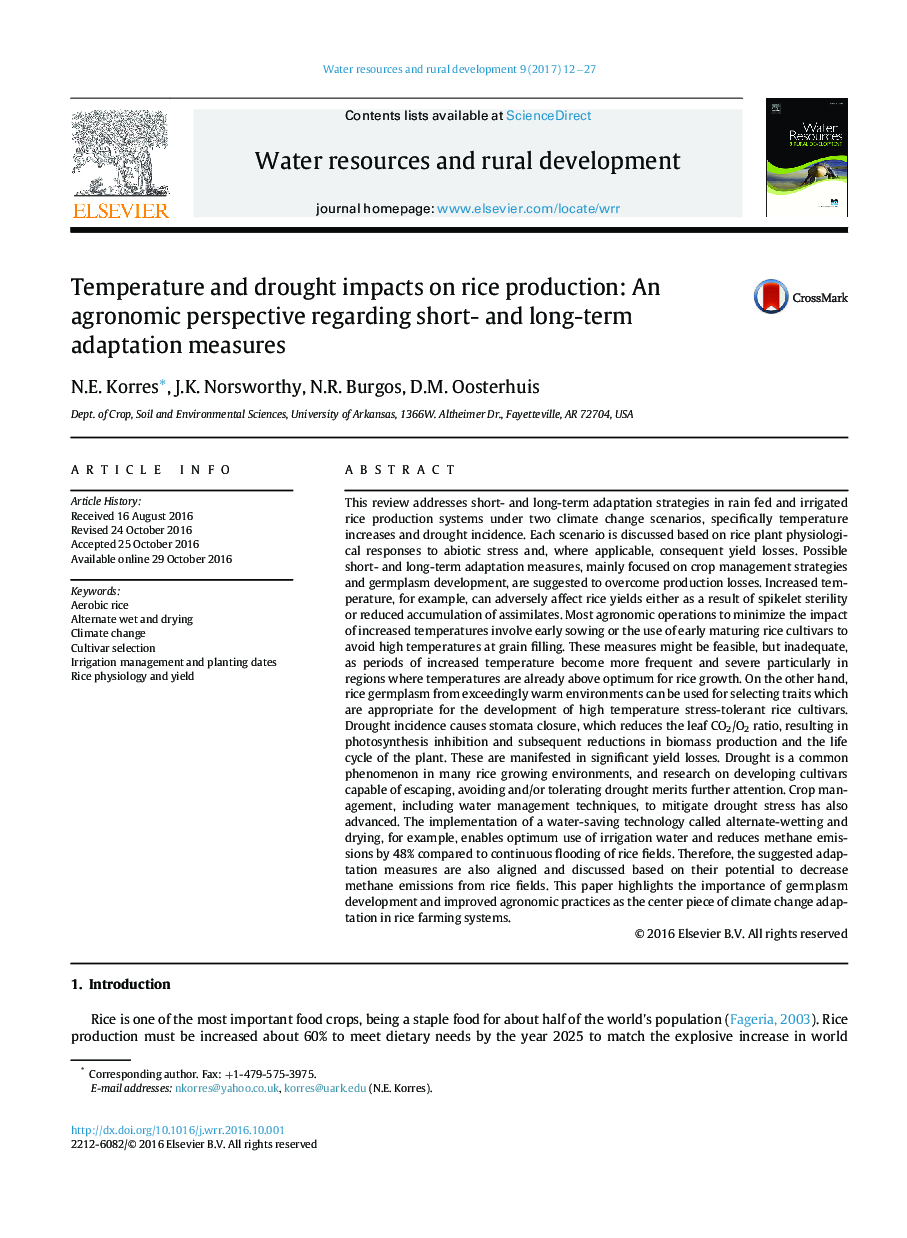| کد مقاله | کد نشریه | سال انتشار | مقاله انگلیسی | نسخه تمام متن |
|---|---|---|---|---|
| 5119493 | 1485929 | 2017 | 16 صفحه PDF | دانلود رایگان |
This review addresses short- and long-term adaptation strategies in rain fed and irrigated rice production systems under two climate change scenarios, specifically temperature increases and drought incidence. Each scenario is discussed based on rice plant physiological responses to abiotic stress and, where applicable, consequent yield losses. Possible short- and long-term adaptation measures, mainly focused on crop management strategies and germplasm development, are suggested to overcome production losses. Increased temperature, for example, can adversely affect rice yields either as a result of spikelet sterility or reduced accumulation of assimilates. Most agronomic operations to minimize the impact of increased temperatures involve early sowing or the use of early maturing rice cultivars to avoid high temperatures at grain filling. These measures might be feasible, but inadequate, as periods of increased temperature become more frequent and severe particularly in regions where temperatures are already above optimum for rice growth. On the other hand, rice germplasm from exceedingly warm environments can be used for selecting traits which are appropriate for the development of high temperature stress-tolerant rice cultivars. Drought incidence causes stomata closure, which reduces the leaf CO2/O2 ratio, resulting in photosynthesis inhibition and subsequent reductions in biomass production and the life cycle of the plant. These are manifested in significant yield losses. Drought is a common phenomenon in many rice growing environments, and research on developing cultivars capable of escaping, avoiding and/or tolerating drought merits further attention. Crop management, including water management techniques, to mitigate drought stress has also advanced. The implementation of a water-saving technology called alternate-wetting and drying, for example, enables optimum use of irrigation water and reduces methane emissions by 48% compared to continuous flooding of rice fields. Therefore, the suggested adaptation measures are also aligned and discussed based on their potential to decrease methane emissions from rice fields. This paper highlights the importance of germplasm development and improved agronomic practices as the center piece of climate change adaptation in rice farming systems.
Journal: Water Resources and Rural Development - Volume 9, June 2017, Pages 12-27
